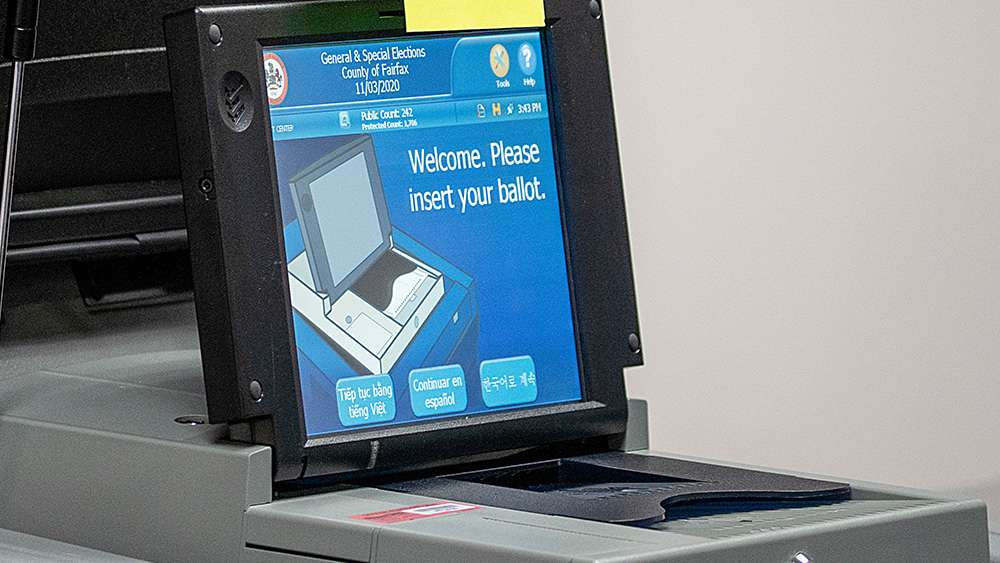Over 1,600 workers to lose job at Illinois Jeep Cherokee factory due to worsening semiconductor shortage
05/27/2021 / By Nolan Barton

More than 1,600 workers are about to lose their jobs at a Jeep Cherokee factory in northern Illinois as the global shortage of semiconductors continues to plague automakers.
The U.S. arm of Stellantis automotive company announced on May 14 that it would cut one of the two work shifts at its Belvidere Assembly Plant beginning July 26. The plant has been idle since late March and its re-opening has been delayed and isn’t expected until “at least” later this month.
Jodi Tinson, a spokeswoman for the company, said it could result in the layoff of as many as 1,641 workers. She claimed that the company is trying to “balance sales with production” and that the factory’s situation “has been further exacerbated by the unprecedented global microchip shortage.” (Related: Top selling vehicles are being held back, made without computers as semiconductor shortage sweeps the globe.)
This statement is at odds with comments made earlier this month by the company’s Chief Financial Officer Richard Palmer, who said that while the “semiconductor shortage impact would be higher in Q2, it would still be “very controlled.”
Stellantis’s Q1 revenues up by 14 percent from last year
Despite the drop in production because of the semiconductor shortage, Stellantis reported earlier this month a 14 percent increase in first-quarter revenues. The company’s revenues for the first three months of 2021 were 36.9 billion euros ($45.1 billion), compared with 32.4 billion euros ($39.6 billion) in the first three months of last year.
Stellantis was created from the merger of Fiat Chrysler Automobiles and PSA Peugeot, which became official on Jan. 17 and created the world’s fourth-largest carmaker. The figures took into account the individual performances of Fiat Chrysler and PSA Peugeot in the preceding periods.
Lost production due to the global chip shortage for the period was 190,000 vehicles, Palmer said. Eight of the company’s 44 plants are currently affected, leading to reductions in shifts or vehicle lines.
Stellantis is working on technical solutions to manage the chip shortage, such as changing the dashboard of the Peugeot 308.
Palmer said the impact could continue into 2022. “We don’t have great visibility,” he said. “As such it would be imprudent to assume the issue is going to go away.”
Overall, shipments were up 11 percent to 1,567,000, due to higher demand and product mix. Production losses due to the semiconductor chip shortage overshadowed the improvements over the first quarter of 2020, when production was suspended temporarily due to the pandemic.
Stellantis’s revenues in its two main markets, North America and Europe, were balanced. North America contributed 15.9 billion euros ($19.4 billion) and Europe just over 16 billion euros ($19.6 billion). Both were improvements over 2020. South America revenues also were up, hitting 2.1 billion euros ($2.6 billion).
Many auto plants shut down in past few months
Many other auto plants, including those owned by General Motors and Ford, have shut down in the past few months because of the chip shortage. The shortage is primarily caused by semiconductor makers switching their factories to more profitable consumer electronics processors when automakers closed last year due to the coronavirus (COVID-19) pandemic.
The semiconductor shortage increased the average lead time for chip deliveries to 17 weeks in April, up from 16 weeks in March. The average lead time was around 12 weeks just before the beginning of the pandemic last year.
“All major product categories are up considerably,” Susquehanna analyst Chris Rolland wrote in a recent investment note. “These were some of the largest increases since we started tracking the data.”
Susquehanna, a global trading and technology firm, referred to the situation as a “danger zone” for chips as the risk of buyers engaging in behavior that magnifies the impact of the crisis increases.
Auto manufacturers are expecting to lose out on $110 billion in potential sales this year, due to a shortage of parts. These types of shortfalls encourage hoarding. A company that can’t ship a $50,000 final product due to a shortage of $5 parts has every reason to hoard and stockpile said parts, whether they actually need them or not.
According to Rolland, the risk of a market overheat is rising due to the “bad behavior” encouraged by shortages. He noted that the semiconductor industry might be shipping more hardware than the actual level of customer demand can support.
Taiwan drought threatens to worsen semiconductor shortage
A severe drought hitting Taiwan threatens to worsen the semiconductor shortage. The country is home to two-thirds of the world’s semiconductor manufacturing capacity, and semiconductor producers require voluminous quantities of water to churn out chips.
The drought’s impact is so far modest as the government creates exceptions for semiconductor manufacturers. Taiwan’s three science industrial parks, which house most of the island’s chip-making facilities, have had to curb their water intake but are so far exempt from stoppages.
“Taiwan is the center of gravity for semiconductor manufacturing,” said Syed Alam, global lead of the semiconductors practice at Accenture. “This is one thing you don’t need adding more pressure on the situation.”
Seasonal typhoons provide Taiwan with much of its water reserves. But a lack of storms last year has strained supplies, prompting the government to start rationing water for more than a million businesses and residents.
The global chip supply has been battered by a series of natural disasters recently.
Severe weather in Texas earlier this year forced Samsung Electronics Co. to close two of its chip factories in Austin temporarily. The auto chipmaker Renesas Electronics Corp.’s plant in Japan was hit first by an earthquake in February and then a fire in March that executives said would require months for recovery. (Related: Fire at Japanese chipmaker adds to collapsing microchip supply lines for automakers.)
Follow Glitch.news for more news and information related to the global semiconductor shortage.
Sources include:
Submit a correction >>
Tagged Under:
automakers, chaos, chip shortage, chipmakers, Collapse, coronavirus, covid-19, Glitch, Jeep Cherokee, market overheat, Microchips, pandemic, semiconductor industry, semiconductor shortage, semiconductors, supply lines, unemployment
This article may contain statements that reflect the opinion of the author
RECENT NEWS & ARTICLES
COPYRIGHT © 2017 GLITCH.NEWS
All content posted on this site is protected under Free Speech. Glitch.news is not responsible for content written by contributing authors. The information on this site is provided for educational and entertainment purposes only. It is not intended as a substitute for professional advice of any kind. Glitch.news assumes no responsibility for the use or misuse of this material. All trademarks, registered trademarks and service marks mentioned on this site are the property of their respective owners.



















